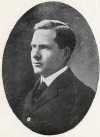 Baskerville was an American teacher and Presbyterian missionary who led a group of student soldiers against Mohammad Ali Shah during the Iranian Constitutional Revolution in the early 20th century. He is thus often referred to as the “American Lafayette in Iran”—a reference to the French military officer who participated in the American Revolution. He was shot and killed 9 days after his 24th birthday in 1909. What did Persian artisans create in recognition of his courage and sacrifice? Discuss
Baskerville was an American teacher and Presbyterian missionary who led a group of student soldiers against Mohammad Ali Shah during the Iranian Constitutional Revolution in the early 20th century. He is thus often referred to as the “American Lafayette in Iran”—a reference to the French military officer who participated in the American Revolution. He was shot and killed 9 days after his 24th birthday in 1909. What did Persian artisans create in recognition of his courage and sacrifice? Discuss
Source: The Free Dictionary
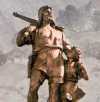 Tell is a famous Swiss folk hero who is remembered in a 15th-century chronicle as an expert marksman who assassinated a tyrannical Austrian governor. According to the legend, the governor of Tell’s Swiss canton hung his hat on a stake and ordered all the townsfolk to bow to it whenever they passed. When Tell refused, he was ordered to shoot an apple off his son’s head with a crossbow as punishment. He succeeded and later escaped imprisonment to kill the governor—an event that led to what?
Tell is a famous Swiss folk hero who is remembered in a 15th-century chronicle as an expert marksman who assassinated a tyrannical Austrian governor. According to the legend, the governor of Tell’s Swiss canton hung his hat on a stake and ordered all the townsfolk to bow to it whenever they passed. When Tell refused, he was ordered to shoot an apple off his son’s head with a crossbow as punishment. He succeeded and later escaped imprisonment to kill the governor—an event that led to what?  This official public holiday memorializes the
This official public holiday memorializes the 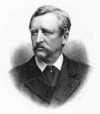 Nordenskiöld was a Finnish-born Swedish geologist, mineralogist, geographer, and explorer who wrote several valuable books on geography, cartography, and travel. In 1858, he settled in Stockholm and became professor and curator of mineralogy at the Swedish State Museum. He led several expeditions to the Arctic island of Spitsbergen between 1864 and 1873 and later became the first to sail from Norway to Alaska through the Northeast Passage. He was also the first to break through what ice barrier?
Nordenskiöld was a Finnish-born Swedish geologist, mineralogist, geographer, and explorer who wrote several valuable books on geography, cartography, and travel. In 1858, he settled in Stockholm and became professor and curator of mineralogy at the Swedish State Museum. He led several expeditions to the Arctic island of Spitsbergen between 1864 and 1873 and later became the first to sail from Norway to Alaska through the Northeast Passage. He was also the first to break through what ice barrier? 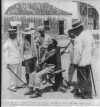 Macabre enough to earn an appearance in two James Bond films, the garrote, a weapon used for strangulation, was used in Rome as early as the first century. The device takes many forms and can be made from a variety of materials, including chain, rope, fabric, wire, or fishing line. Used throughout history and as recently as 1974 in Spain, garrotes were also developed as execution devices. What nation became the last country in the world to abolish the death penalty by garroting in 1990?
Macabre enough to earn an appearance in two James Bond films, the garrote, a weapon used for strangulation, was used in Rome as early as the first century. The device takes many forms and can be made from a variety of materials, including chain, rope, fabric, wire, or fishing line. Used throughout history and as recently as 1974 in Spain, garrotes were also developed as execution devices. What nation became the last country in the world to abolish the death penalty by garroting in 1990? 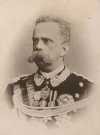 The son of Victor Emmanuel II, Umberto I was king of Italy from 1878 to 1900. Increasingly authoritarian, he favored imperialistic and pro-German policies and disregarded the recommendations of parliamentary leaders. His orientation helped lead to the conclusion of the Triple Alliance. Facing increasing social unrest, he supported the imposition of martial law and created a period of turmoil that culminated in three attempts on his life. He survived the first two. Who was the third assassin?
The son of Victor Emmanuel II, Umberto I was king of Italy from 1878 to 1900. Increasingly authoritarian, he favored imperialistic and pro-German policies and disregarded the recommendations of parliamentary leaders. His orientation helped lead to the conclusion of the Triple Alliance. Facing increasing social unrest, he supported the imposition of martial law and created a period of turmoil that culminated in three attempts on his life. He survived the first two. Who was the third assassin?